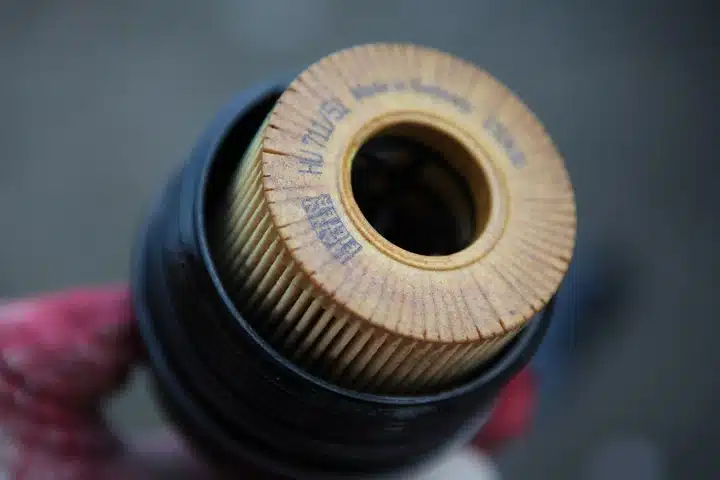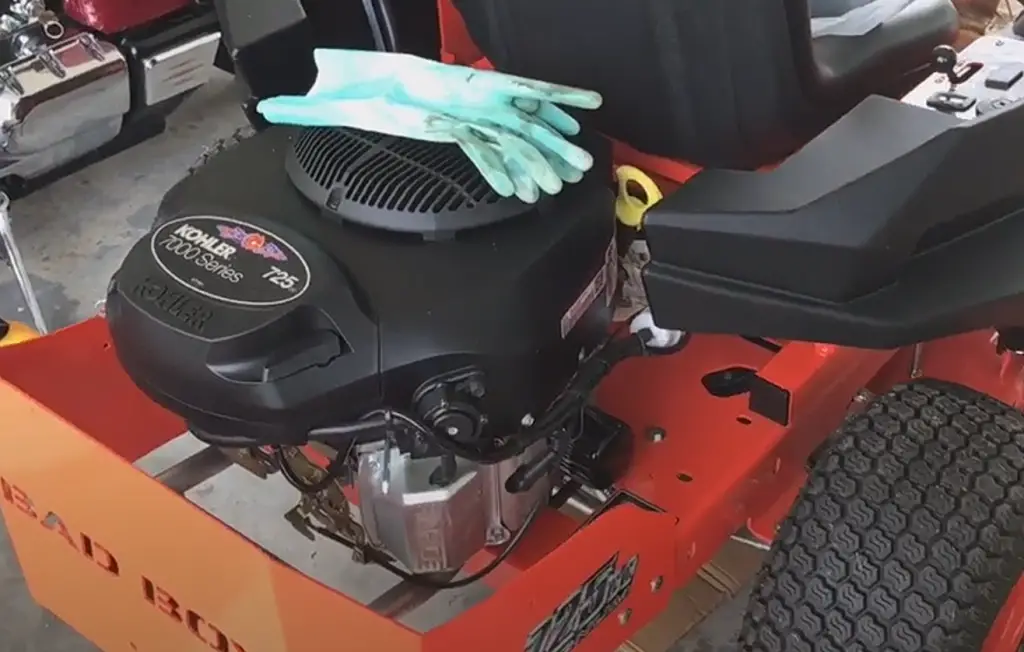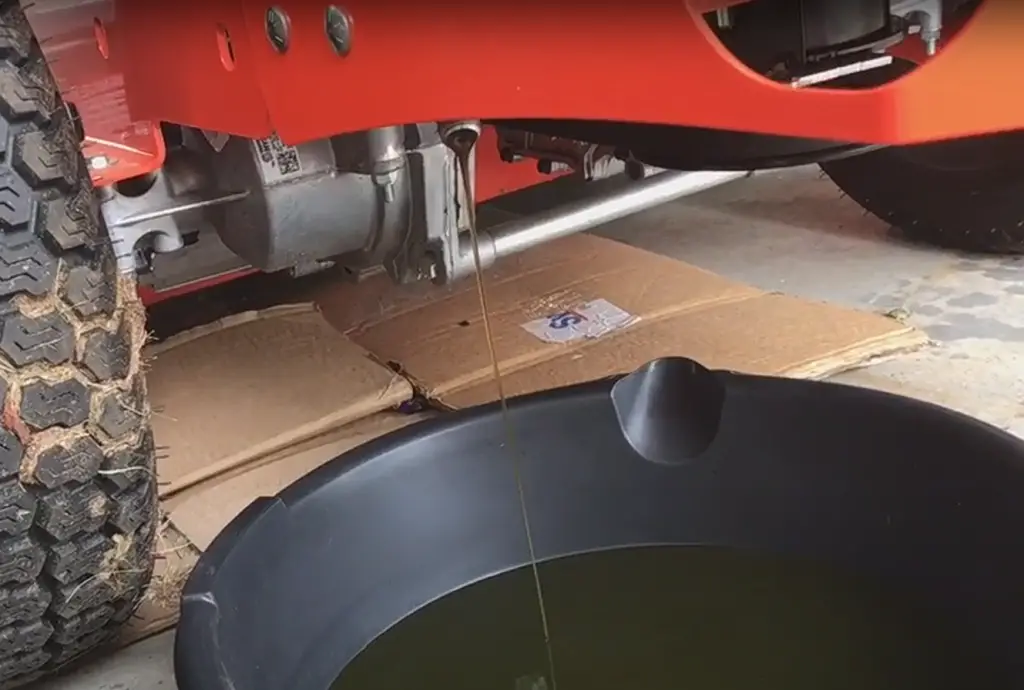Maintaining your lawn mower, managing its upkeep, and mastering its maintenance are all crucial steps in ensuring the longevity of your gardening equipment.
As a professional writer with a keen interest in DIY and garden machinery, I’ve found that many people overlook the importance of regularly changing the oil in their lawn mowers, which can lead to a host of mechanical issues down the line.
I’ll guide you through the process of draining the oil efficiently and safely, ensuring that you avoid common pitfalls.
In this discussion, we’ll explore the necessary preparations, the tools you’ll need, and the steps to properly drain the oil, which is a surprisingly simple yet critical task.
What’s often not discussed is the intrigue that lies in the nuances of this seemingly mundane process—nuances that hold the key to enhancing your mower’s performance and durability.
Quick Summary
- To drain oil from a lawn mower, tilt the machine, drain the old oil, replace the filter if needed, and refill with fresh oil.
- Preparation for the oil change involves gathering tools, checking the mower’s manual for oil types, and understanding local disposal regulations.
- Recycling just two gallons of used oil can generate enough electricity to run the average household for almost 24 hours, according to the EPA.
- In my opinion, regularly changing the lawn mower’s oil is as crucial as mowing the lawn itself for maintaining a well-kept yard.
Step by step: How to Change Lawn Mower Oil
Changing the oil in your lawn mower is crucial for its performance and longevity. I’ll show you how to prepare your mower, properly dispose of the old oil, and if necessary, switch out the oil filter.
Prepare for the Oil Change
Before embarking on an oil change for your lawn mower, it’s essential to gather the necessary tools and materials to ensure a smooth and efficient process.
First, I check my mower’s manual for the right oil types and engine compatibility—it’s crucial for maintenance frequency and the mower’s longevity. I always make sure I’ve the correct oil type on hand before I start.
Next, I familiarize myself with local disposal regulations to responsibly handle the used oil. I don’t want to harm the environment due to negligence.
Lastly, as part of my seasonal preparation, I ensure all my tools are clean and accessible. Having everything ready before I begin saves me time and helps me avoid any mid-maintenance runs to the store.
Dump the Old Oil
Once the preparation is complete, it’s time to tilt the lawn mower to its side and carefully drain the old oil from the engine. I’ve got a pan ready to catch the oil, ensuring I don’t spill any.
As the oil pours out, I look for contamination signs like a milky appearance or metal particles—indicators it’s definitely time for a change.
I’m mindful of oil viscosity, which can vary with seasonal changes; a thicker oil in winter may flow more slowly. It’s crucial to consider the environmental impact here; I can’t just dump the old oil anywhere.
I’ll use the appropriate disposal methods, taking it to a recycling center or a designated disposal facility, because responsible actions today protect our environment tomorrow.
Replace the Oil Filter (if Applicable)

If your lawn mower is equipped with an oil filter, you’ll need to replace it to ensure the engine runs smoothly.
I always start by checking filter compatibility, making sure the new filter matches the model of my mower.
Using the correct wrench, I gently remove the old filter, taking care not to damage the sealing gasket surface.
Before installing the new filter, I apply a bit of oil to the sealing gasket for a good seal. This is crucial for maintaining the integrity of the lubrication system.
Once installed, I double-check that it’s secured properly.
Lastly, I take care of filter disposal, following local regulations to responsibly discard the used filter.
With a fresh filter in place, my mower’s ready for action.
Refill Mower Oil
After replacing the oil filter, it’s crucial to refill your lawn mower with the right type and amount of oil to ensure optimal performance.
I always check the manufacturer’s recommendations for oil types and viscosity grades because these directly affect my mower’s efficiency. The right oil keeps the engine lubricated and running smoothly, especially with seasonal changes.
For instance, I use a thicker oil for summer heat and a thinner one for cooler spring or fall temperatures.
When I’m done, I note the amount I’ve added to avoid overfilling and ensure I’ve enough for the next change. I also follow storage tips to keep the oil fresh and adhere to disposal regulations for the old oil, making sure I’m responsible for the environment.
Recommendations
I’ve found that using a plastic jug for oil drainage isn’t only convenient but also minimizes spills.
I’ll share some essential safety tips that you should always keep in mind during the process.
Ensuring you’re well-prepared makes the task smoother and keeps your lawn mower in great shape for the next mow.
Why a Plastic Jug is Best for Draining Lawn Mower Oil
Using a plastic jug for oil drainage from your lawn mower offers unmatched convenience and efficiency. I’ve found that regardless of oil viscosity, the smooth interior of a plastic jug facilitates quick and clean drainage.
It’s all about spill management; the jug’s narrow spout allows for precise pouring, minimizing the risk of oil spills that can stain my driveway or harm my lawn.
Plus, the container size is just right for the typical amount of oil a lawn mower holds, which means I’m not struggling with an unwieldy bucket.
I’m also mindful of the environmental impact. A plastic jug is a recyclable option, so once I’m done, I can easily clean it out and recycle it, ensuring I’m doing my part for the planet.
Also Read: How to Drain Gas from Lawn Mower
Safety Tips When Draining Lawn Mower Oil

Before starting the oil change, ensure the lawn mower engine is cool to the touch to prevent burns. I always prioritize safety during engine maintenance, so I wear personal protective gear, including gloves and eye protection.
It’s crucial to remember that oil and other flammable liquids require careful handling. I keep a fire extinguisher nearby and perform the oil change away from any open flames or sparks.
I’m also mindful of environmental hazards. Draining oil directly onto the ground or into a storm drain is a no-go. It contaminates our ecosystem.
Lastly, I follow local disposal regulations strictly. I take the used oil to a recycling center or a designated disposal facility. It’s not just about keeping my lawn mower in top shape; it’s about doing it responsibly.
Additional Insights for Optimal Lawn Mower Maintenance
In addition to the fundamental steps of draining oil from a lawn mower, there are several additional considerations that can enhance your mower’s performance, prolong its lifespan, and ensure environmental responsibility.
This section delves into these often overlooked yet crucial aspects of lawn mower maintenance.
From the environmental impact of oil disposal to the nuances of handling different types of mowers, these insights aim to provide a comprehensive understanding that goes beyond the basics.
Whether you’re a seasoned gardener or a DIY enthusiast, these tips will equip you with the knowledge to maintain your lawn mower in an efficient, safe, and environmentally friendly manner.
Environmental Impact of Improper Oil Disposal
The environmental ramifications of improperly disposing of lawn mower oil are significant and often overlooked. When oil is not disposed of correctly, it can seep into the ground, contaminating soil and potentially reaching groundwater.
This contamination poses a serious threat to local ecosystems, affecting plants, animals, and even human health. It’s crucial to understand that oil is a pollutant that can have long-lasting adverse effects on the environment.
Educating readers on the proper disposal of oil, including taking it to recycling centers or special waste disposal facilities, can help mitigate these risks.
Encouraging environmentally responsible behavior not only helps in maintaining a healthy ecosystem but also aligns with the growing global emphasis on sustainable practices.
Benefits of Using a Vacuum Pump for Oil Drainage
Utilizing a vacuum pump for draining oil from lawn mowers offers a cleaner, more efficient alternative to traditional methods.
This technique is particularly advantageous for those seeking to avoid the mess and potential spills associated with manual draining. A vacuum pump can neatly extract oil through the dipstick tube, reducing the likelihood of oil spills and contamination.
This method is especially beneficial for those with limited mechanical experience or those working in areas where maintaining cleanliness is paramount.
The simplicity and cleanliness of using a vacuum pump make it an attractive option for both novice and experienced users, offering a hassle-free approach to lawn mower maintenance.
Tips for Preventing Oil Spills and Contamination

Preventing oil spills and contamination during the draining process is crucial for both environmental protection and maintaining a clean workspace.
One effective strategy is to use absorbent materials like old rags or absorbent pads under and around the work area to catch any accidental spills.
Additionally, ensuring the lawn mower is on a stable and level surface can prevent accidental tipping or oil overflow. When pouring old oil into a disposal container, using a funnel can minimize spills.
It’s also important to immediately clean up any spills to prevent them from spreading or seeping into the ground. These preventive measures not only help protect the environment but also make the oil change process cleaner and more efficient.
Special Considerations for Different Types of Lawn Mowers
Different types of lawn mowers, such as push mowers, riding mowers, and zero-turn mowers, require specific considerations when it comes to oil drainage.
For instance, push mowers often have simpler engines and may not have an oil filter, making the process more straightforward.
In contrast, riding mowers and zero-turn mowers typically have larger engines with oil filters, necessitating additional steps like filter replacement. Understanding these differences is crucial for effective maintenance.
For larger mowers, accessing the drain plug might require lifting the mower or using ramps, and these mowers often have more oil capacity, requiring more attention to oil level and type.
Tailoring the oil change process to the specific type of mower ensures that the maintenance is done correctly, preserving the longevity and performance of the machine.
Health and Safety Precautions During Oil Change
Taking health and safety precautions is essential when changing lawn mower oil. Wearing protective gloves and eyewear can prevent skin and eye irritation from used oil, which may contain harmful contaminants.
It’s also important to work in a well-ventilated area to avoid inhaling fumes. Ergonomic practices, such as using a proper lifting technique when tilting or moving the lawn mower, can prevent strain and injury.
Additionally, ensuring the mower is turned off and the spark plug is disconnected before starting the oil change process can prevent accidental starts.
Properly storing and disposing of old oil and used filters is crucial for environmental safety and compliance with local regulations.
By following these safety guidelines, individuals can protect themselves and their surroundings while performing this necessary maintenance task.
Read More: Dangers of Zero Turn Mower: Hidden Facts
Our Verdict: Draining Oil from Your Lawn Mower
In my experience, regularly changing the oil in your lawn mower isn’t just a chore—it’s an essential part of caring for your garden equipment.
I’ve taken you through the steps, from preparation to disposal, emphasizing the environmental responsibility and the importance of using the right tools and techniques.
Personally, I’ve found that using a plastic jug for draining oil and adopting safety measures like wearing gloves has made the process smoother and more efficient. It’s these little tricks that transform maintenance from a task into an art.
And remember, responsibly disposing of old oil isn’t just good for your mower; it’s good for the planet too.
So here’s my take: with the right approach, you can ensure your lawn mower runs smoothly, contributing to both a healthier mower and a greener environment.
Keep these tips in mind, and you’re all set for a great-looking lawn and a well-maintained mower.
Frequently Asked Questions
Can I reuse the oil drained from my lawn mower for other purposes, such as lubricating hinges or bicycle chains?
I wouldn’t recommend reusing old oil for lubricating things like hinges or chains. Instead, consider oil filtration for reuse, non-lubricant applications in DIY crafts, or seek alternative disposal methods to repurpose it responsibly.
Is it necessary to replace the oil filter every time I drain the lawn mower oil, or can it be cleaned and reused?
I don’t need to replace the oil filter every time; if it meets reusability criteria and I apply proper filter cleaning methods, it can protect my engine without compromising maintenance service interval factors.
What environmental considerations should I be aware of when disposing of the used lawn mower oil?
I’m mindful of oil pollution, so I adhere to waste regulations and consult environmental agencies. I take used oil to recycling centers to mitigate contamination risks, ensuring I’m eco-friendly.
How can I tell if my lawn mower oil is contaminated and needs to be changed sooner than the recommended interval?
I’ll check the oil color, notice any viscosity change, look for metallic particles, sniff for odd odors, and watch for performance issues to tell if my mower’s oil needs an early change.
Are there any specific safety precautions I should take if I need to tilt the lawn mower to drain the oil, to prevent fuel or other fluids from leaking?
I’ll ensure the tilt angle is safe, disconnect the spark plug, use fuel stabilizer, check the air filter, and take leak prevention steps when handling my equipment for any maintenance task.


